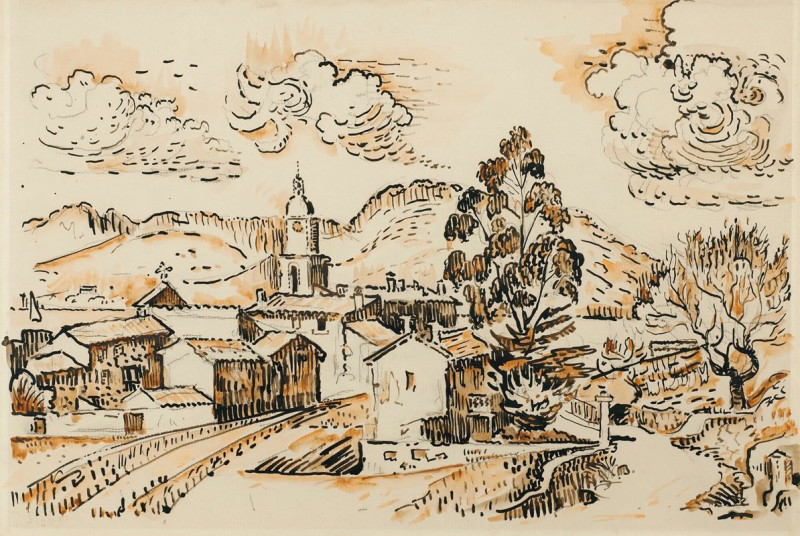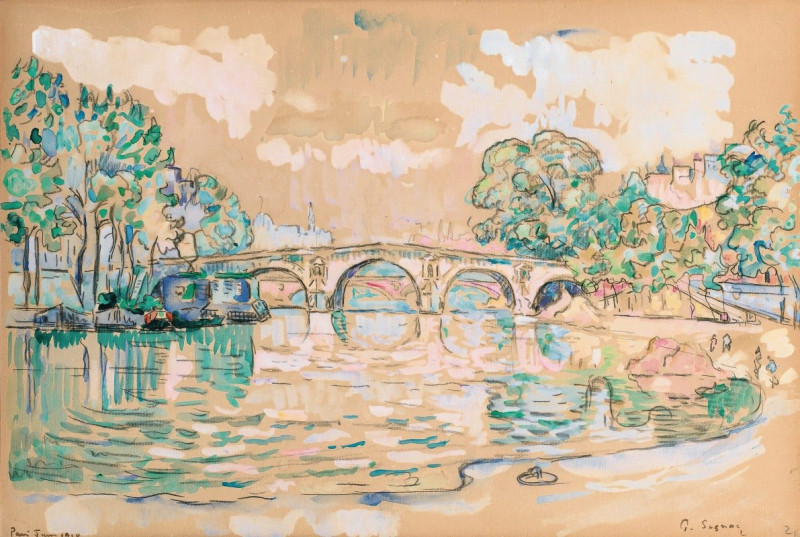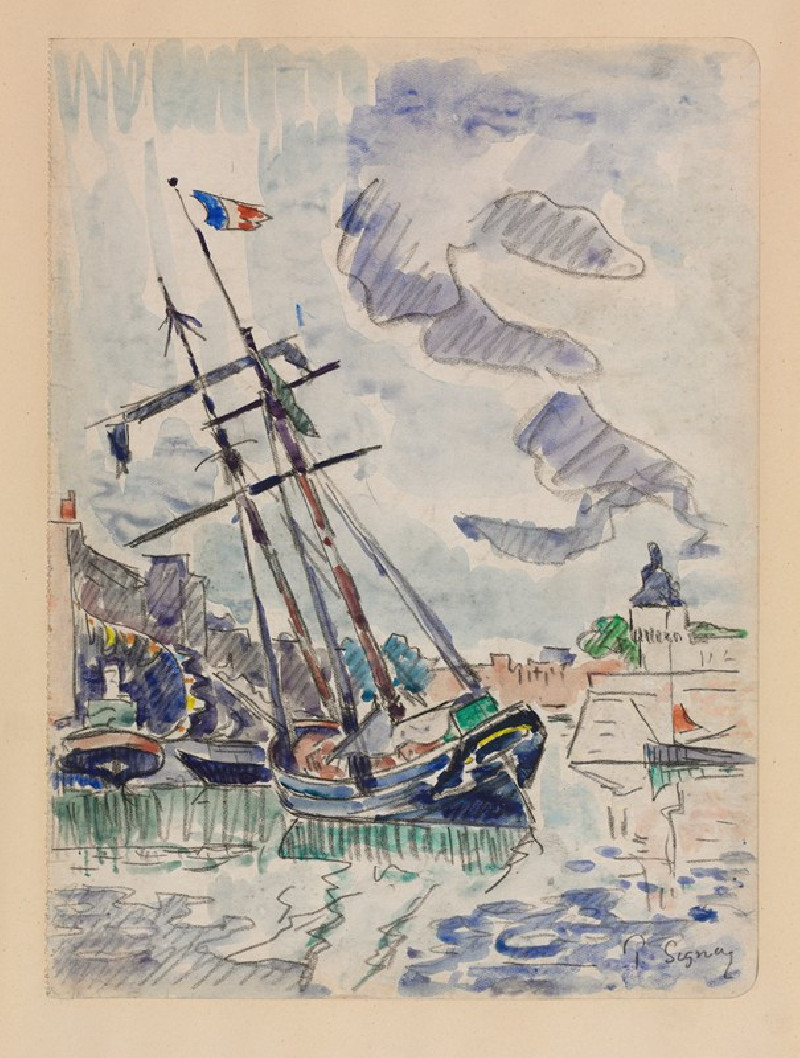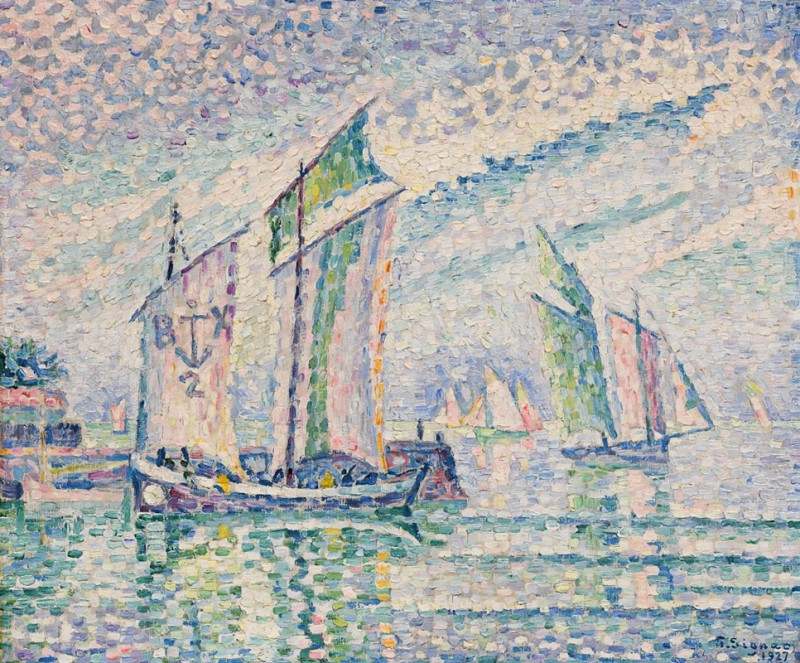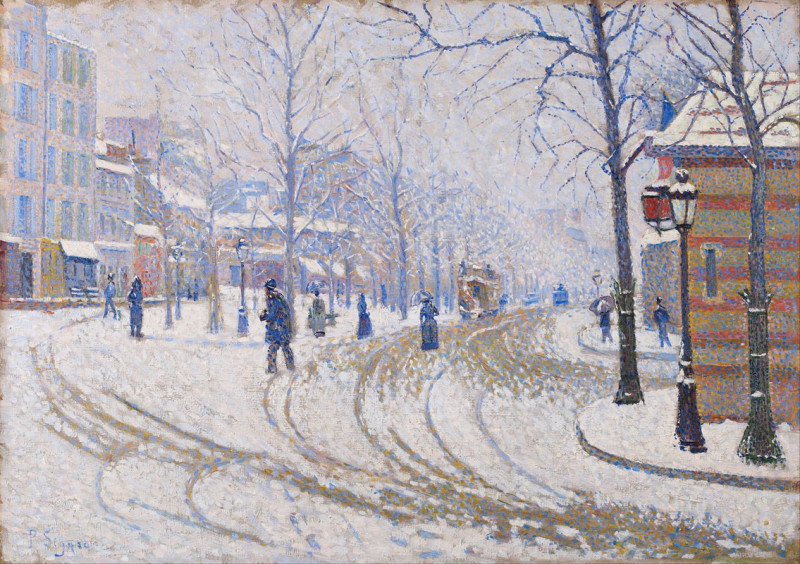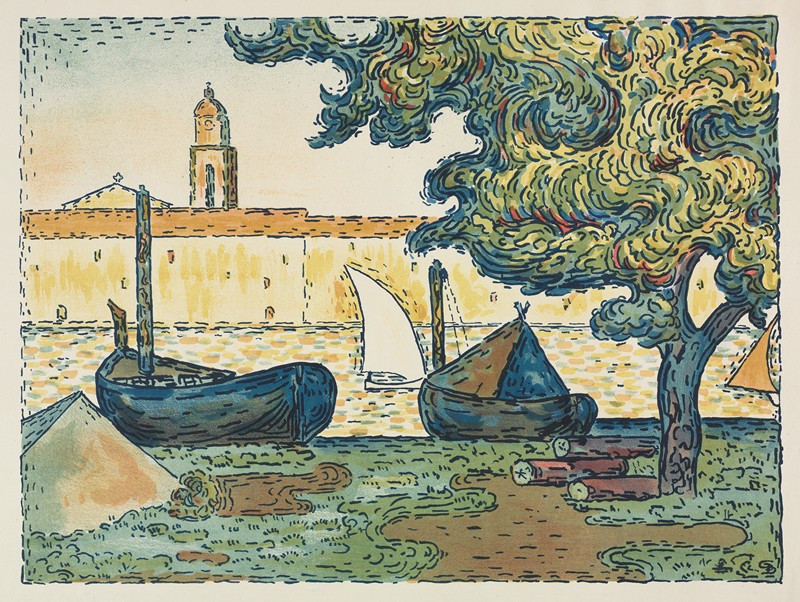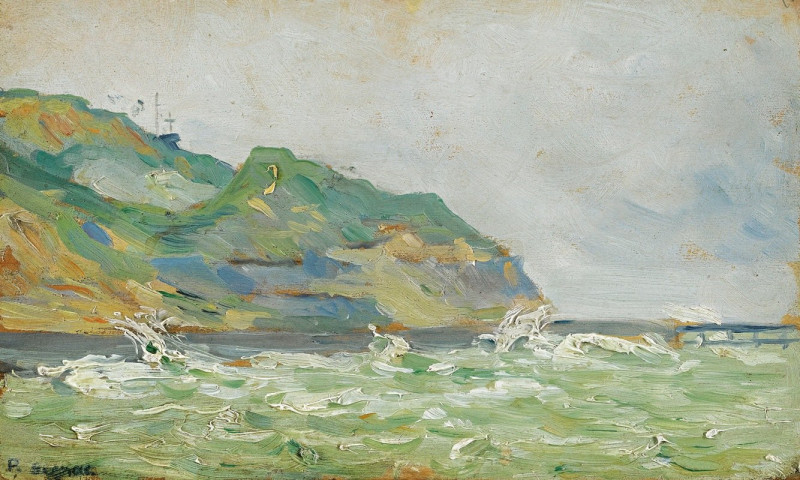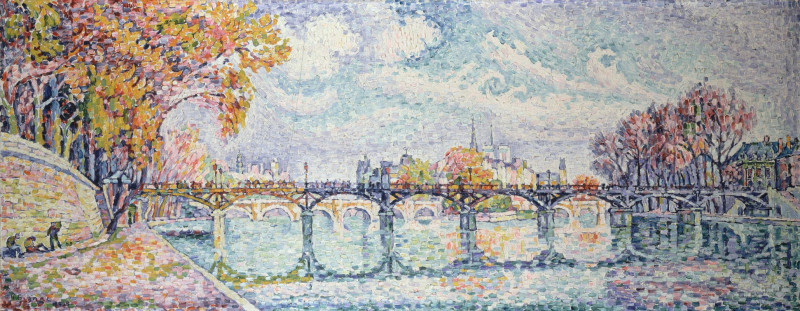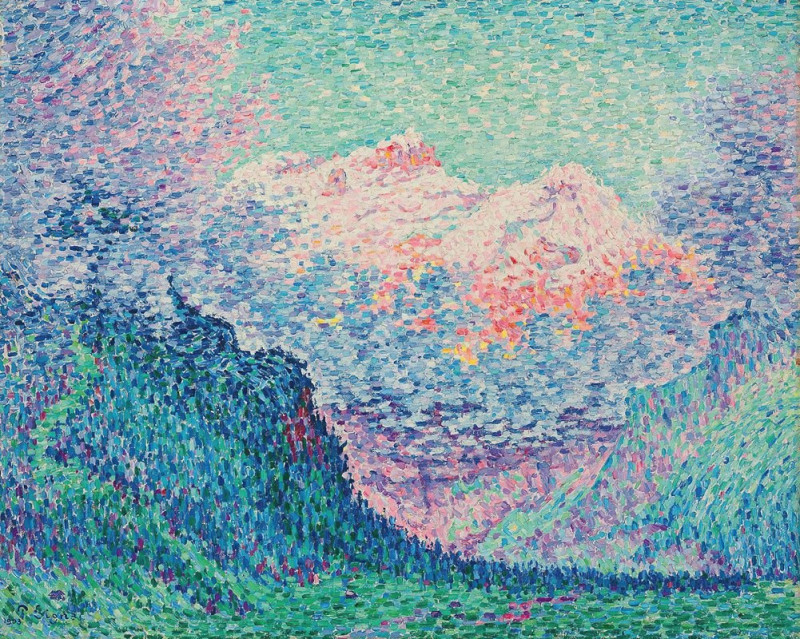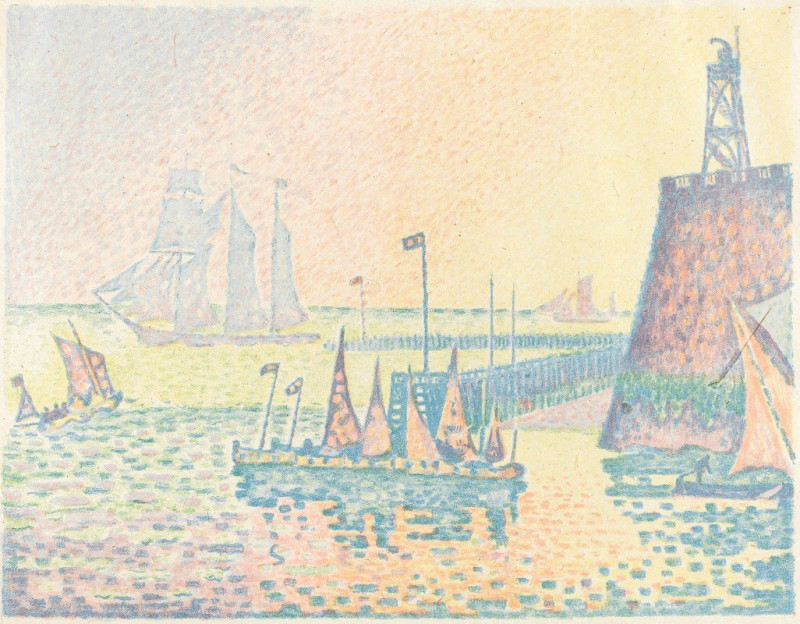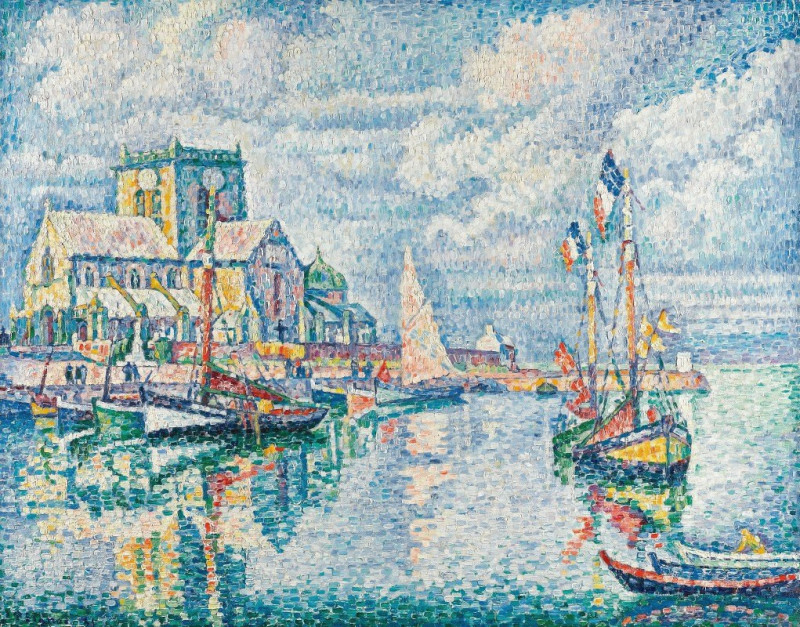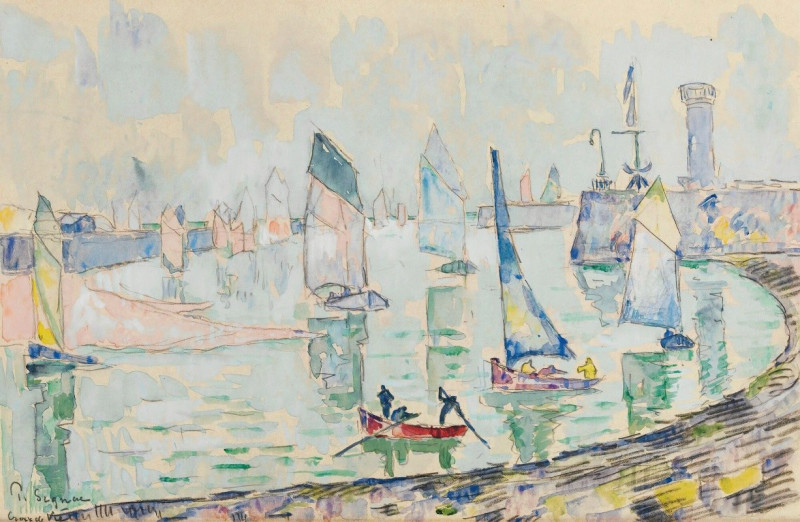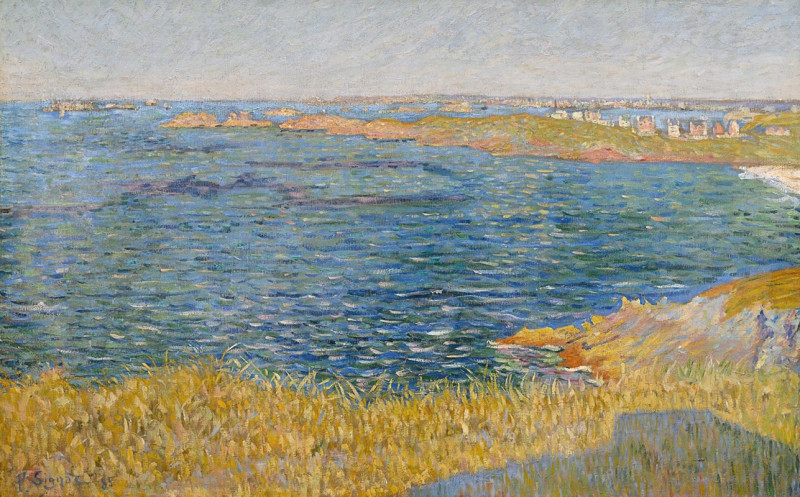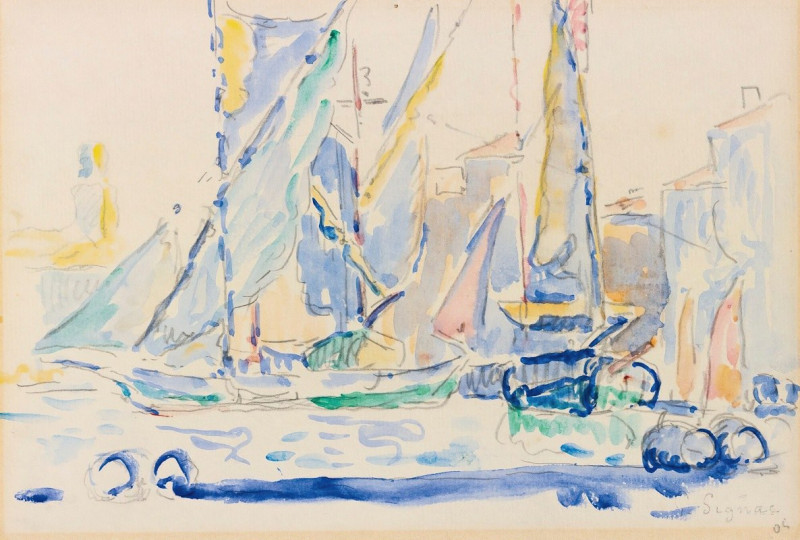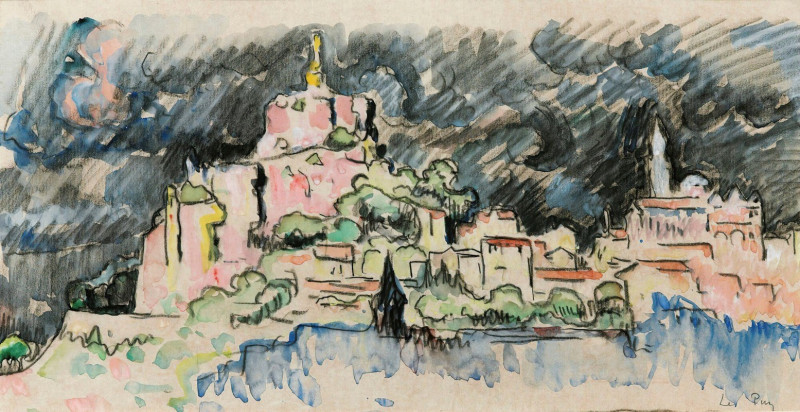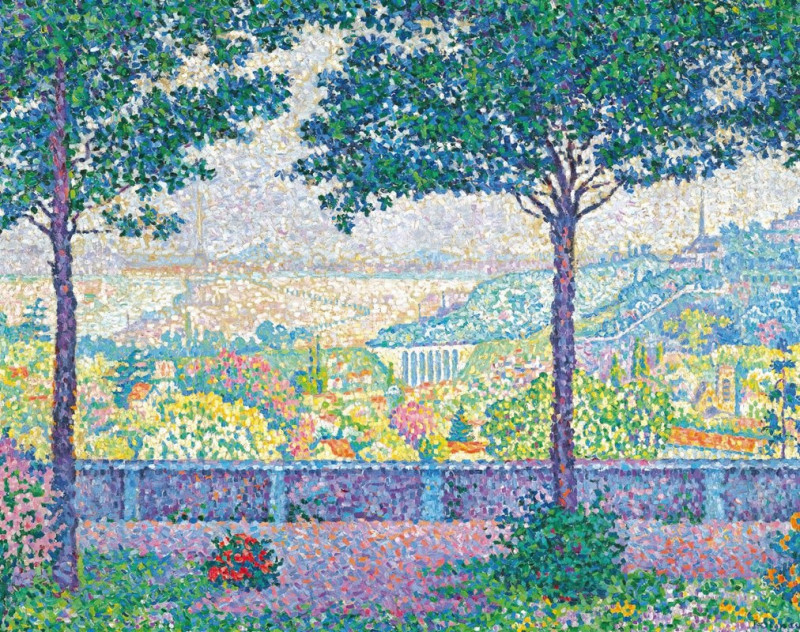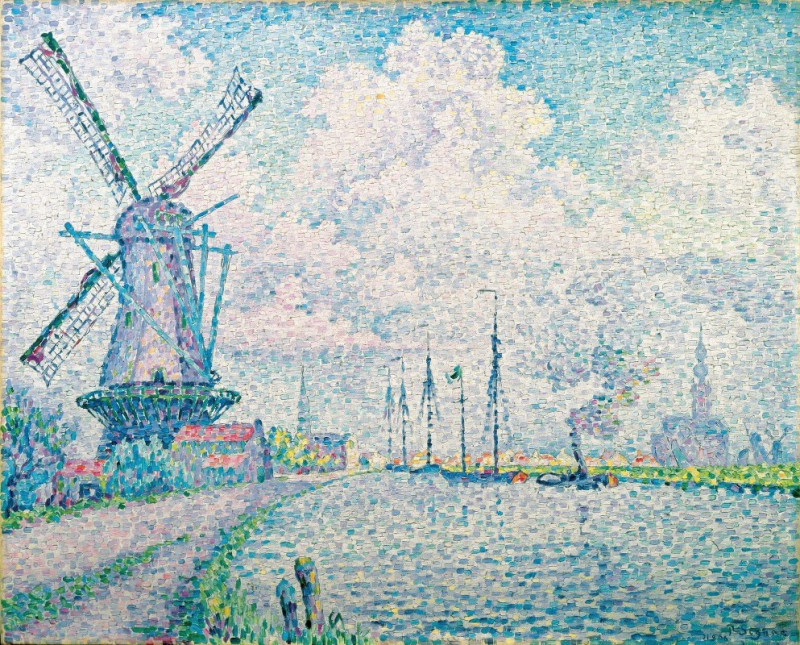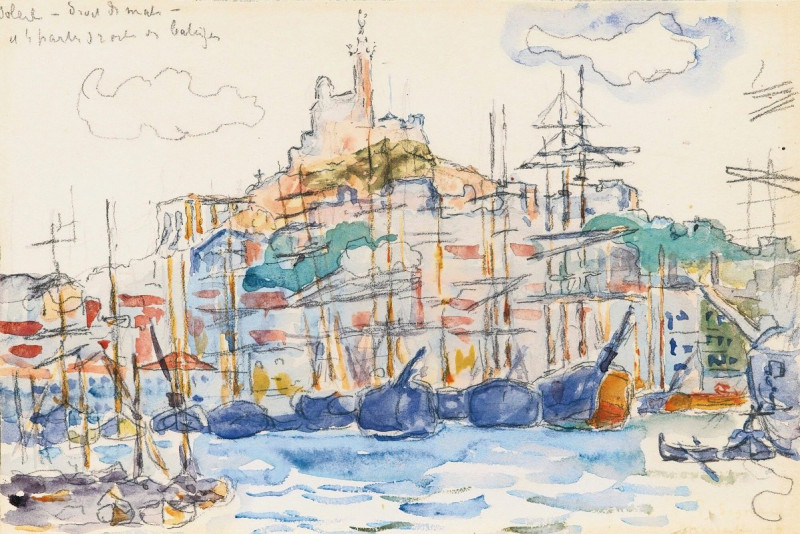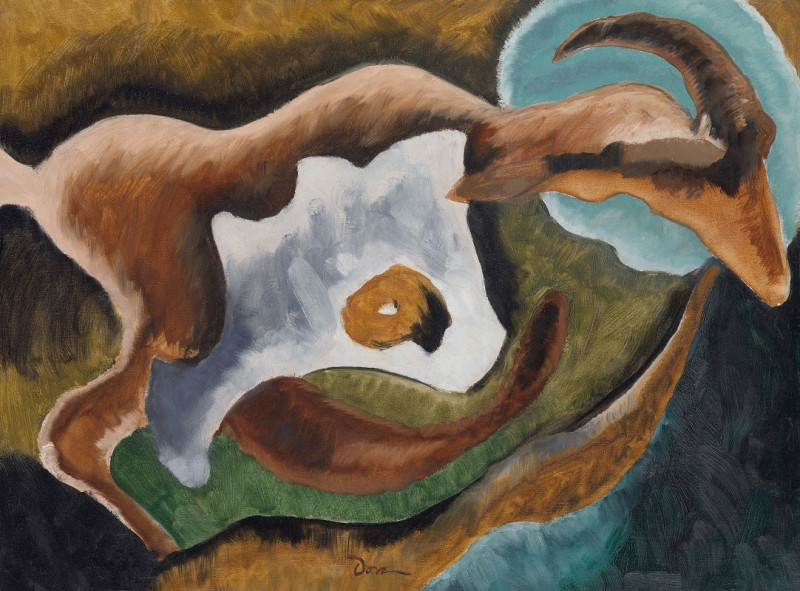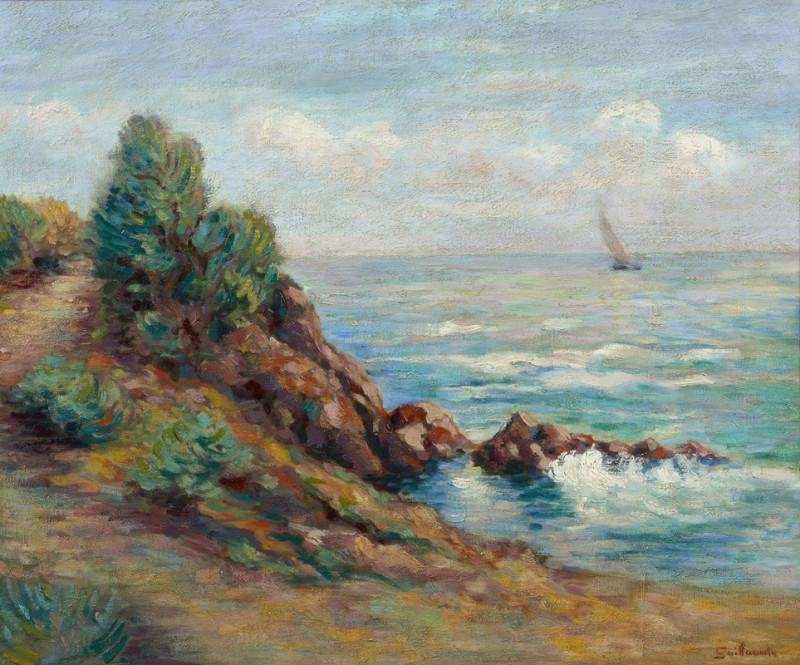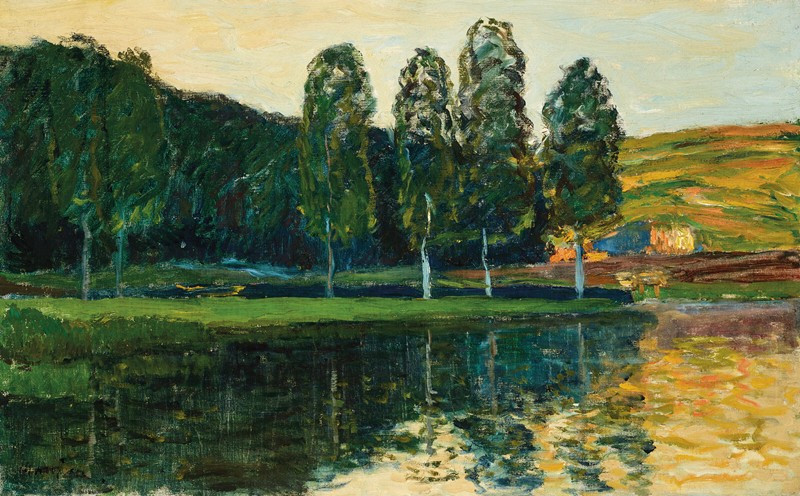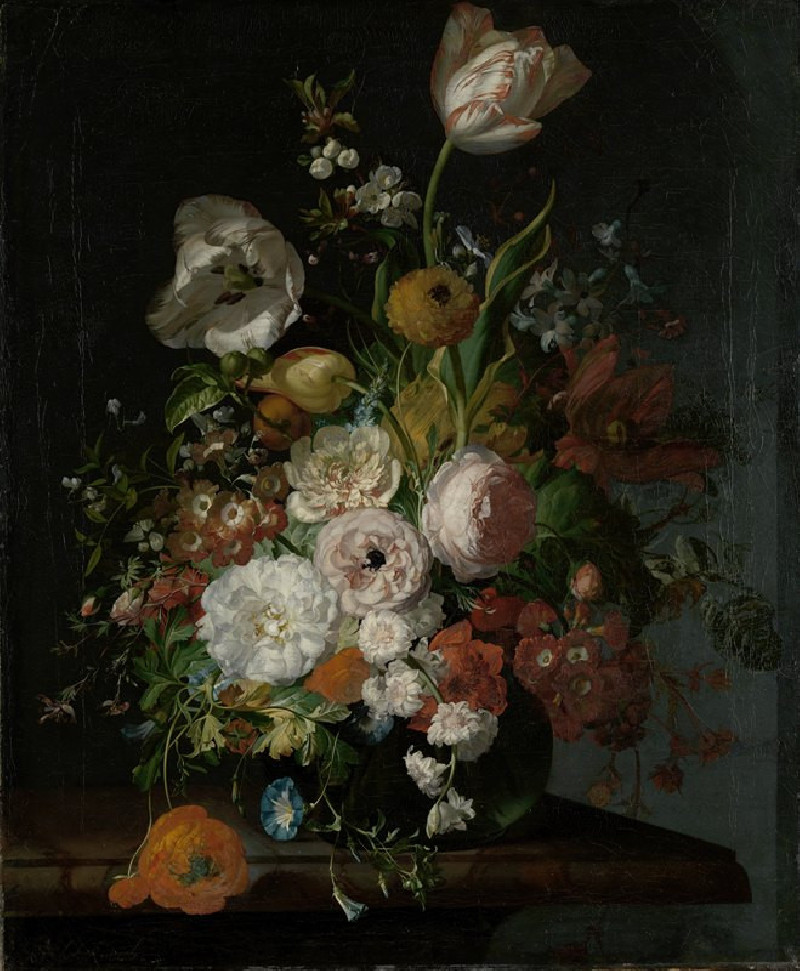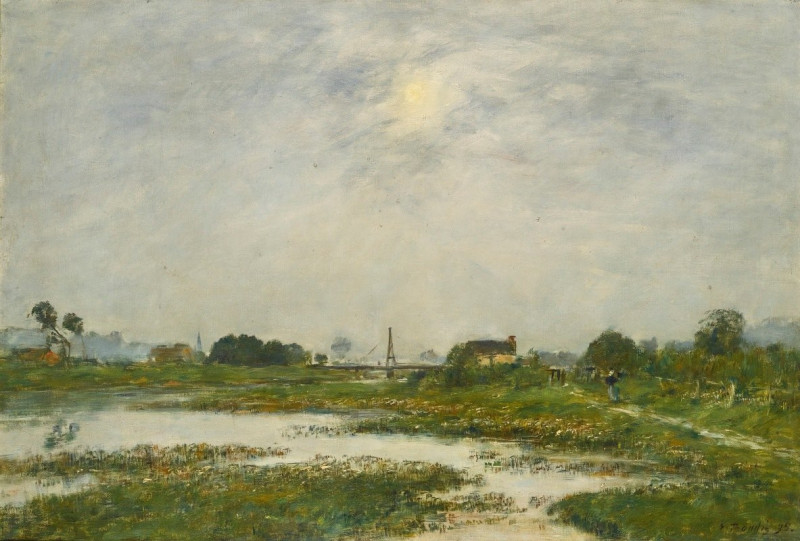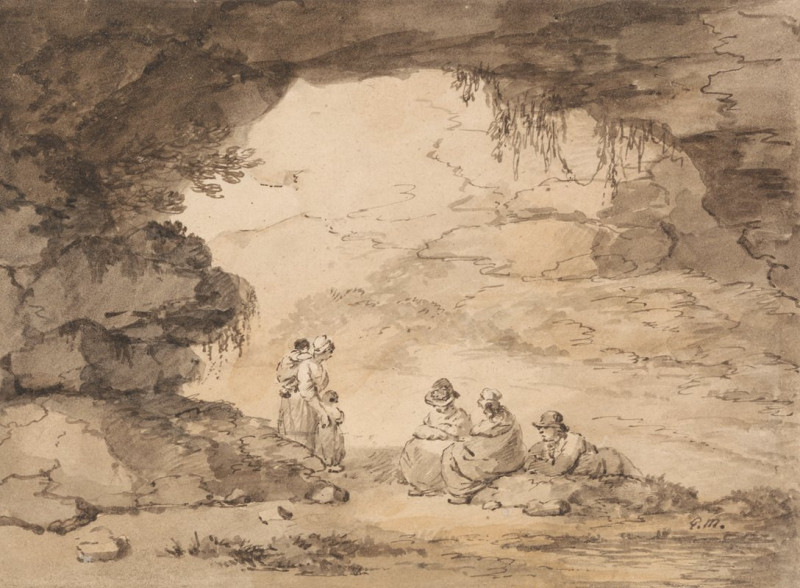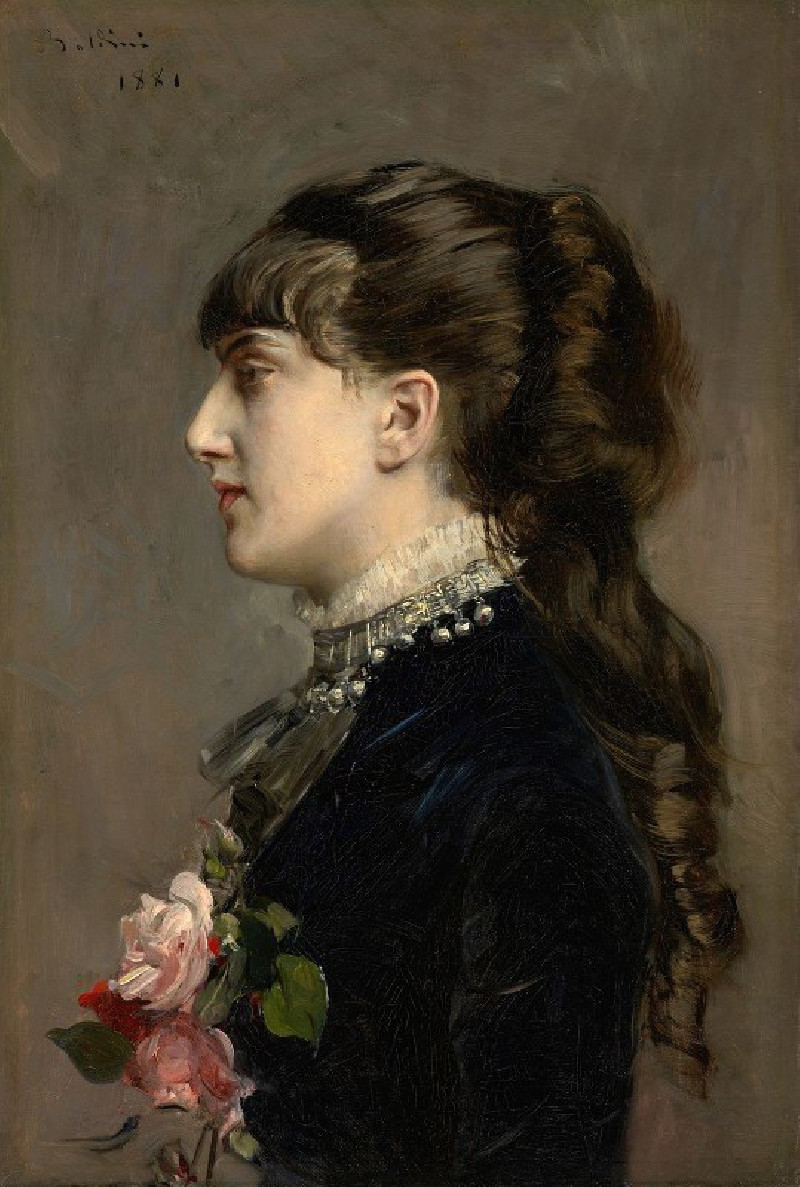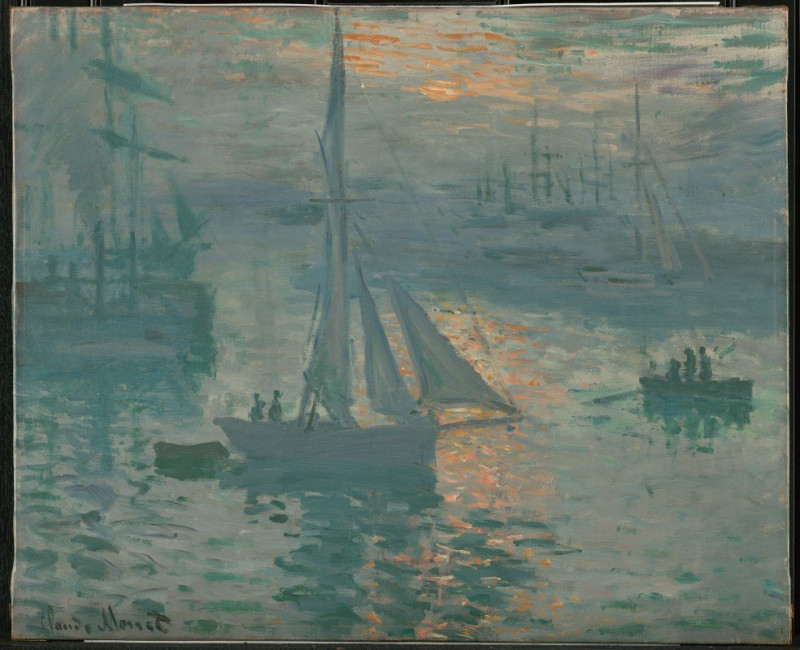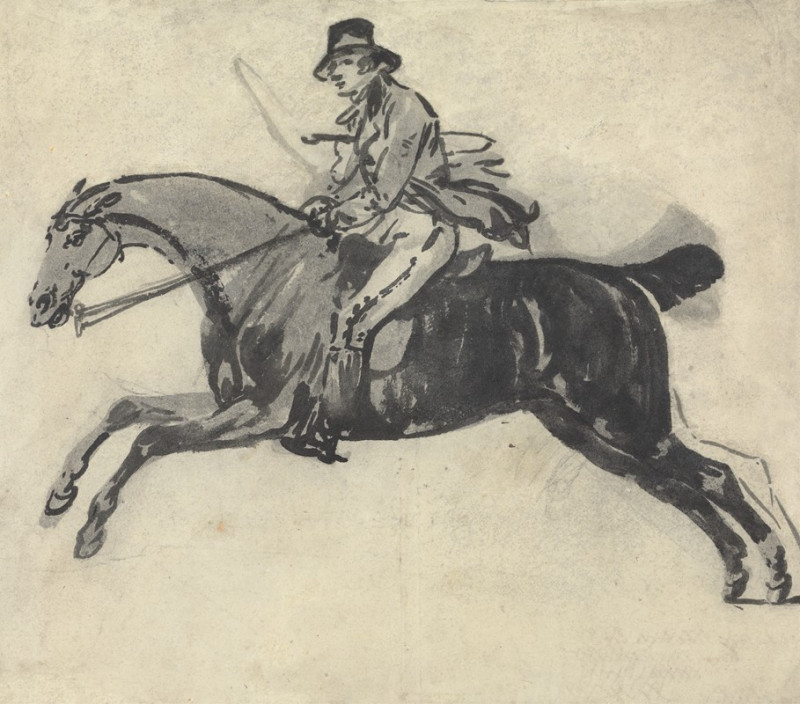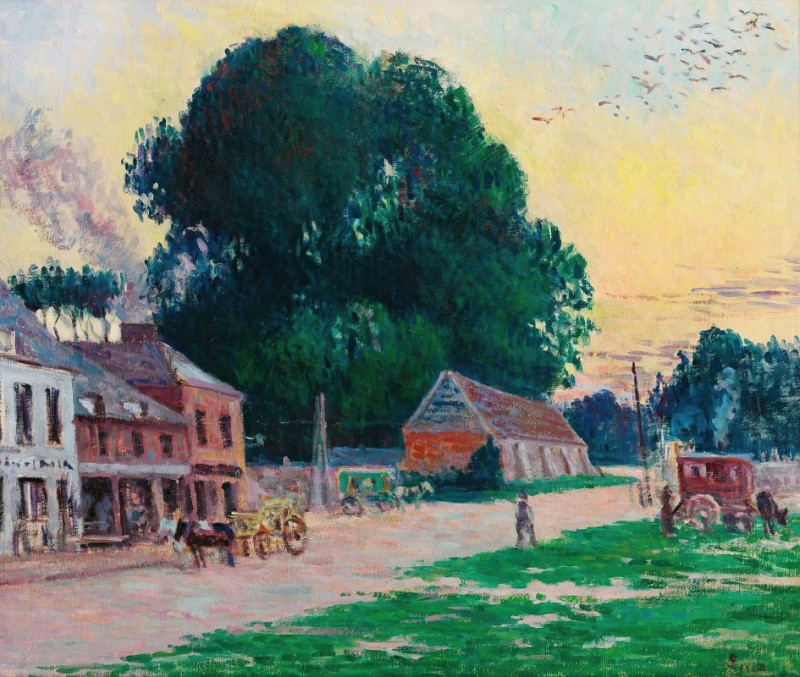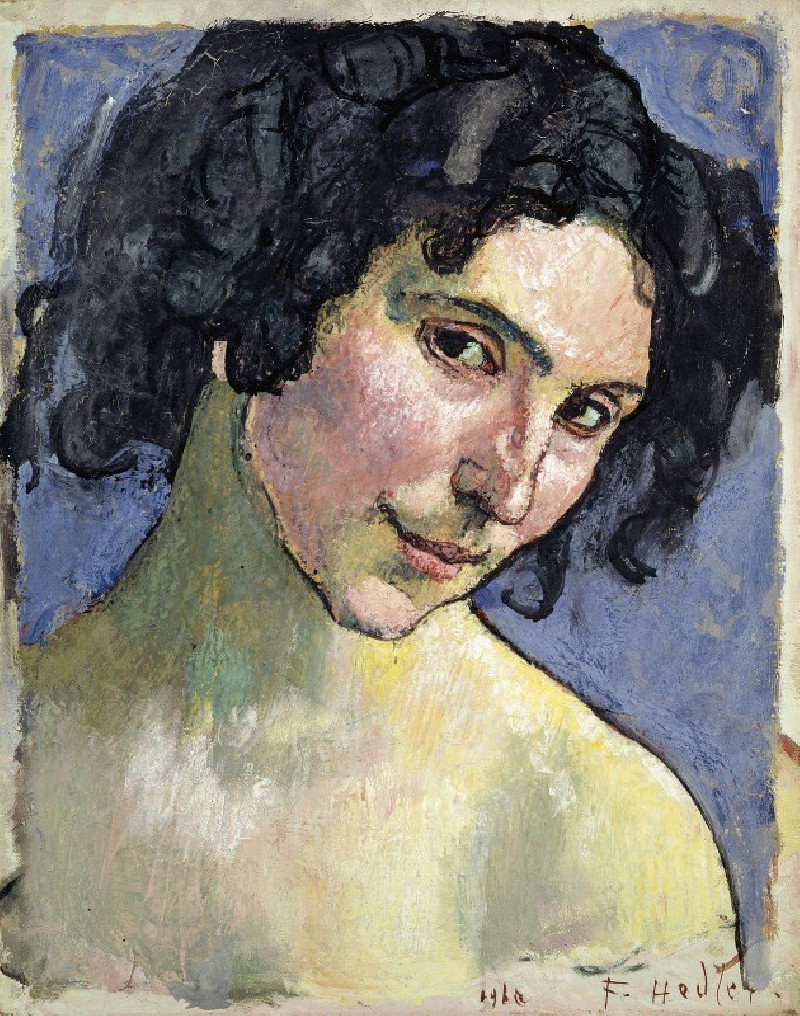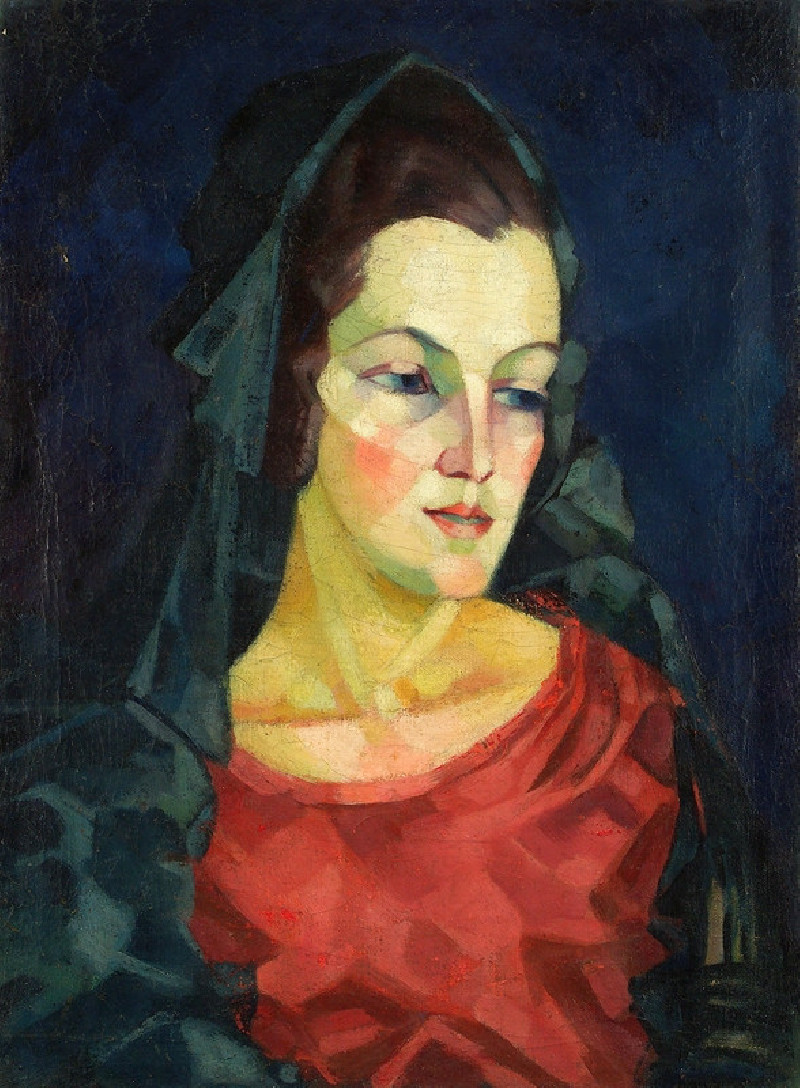Harmonious Times (1895-1896)
Technique: Giclée quality print
Recommended by our customers
More about this artwork
Welcome to a glimpse into the serene world of "Harmonious Times," a captivating work by the French Neo-Impressionist artist Paul Signac, painted between 1895 and 1896. This artwork is a fascinating example of Signac’s mastery in pointillism, a technique developed from Impressionism, where small, distinct dots of color are applied in patterns to form an image."Harmonious Times" invites us on a visual journey through a vibrant landscape bustling with communal joy and activities. The scene radiates with a warm, golden hue of late afternoon sunlight, which bathes the entire landscape, enriching the tranquil atmosphere. In the foreground, various groups of individuals are engaged in leisurely activities; a man reaches towards the branches of a tree, possibly plucking fruits, while nearby, others sit or recline by the red-hued earth, some conversing and others deeply absorbed in their thoughts.Moving towards the middle of the painting, the perspective broadens to include more figures engaged in diverse pastimes. A woman in a flowing dress dances gracefully, accompanied by figures who seem to be enjoying the performance, while another group engages in what appears to be a playful game or dance.In the background, the setting extends to a serene river, where a boat gently sails, and more figures are scattered along the banks, immersed in their various leisurely pursuits. The whole scene is framed by lush trees, their leaves finely dotted in multiple shades that catch the light, highlighting Signac’s painstaking attention to the interplay of color and light.Throughout "Harmonious Times," Signac not only captures an idyllic day of leisure but also reflects a utopian vision of community and harmony with nature.
Delivery
Returns
Paul Signac (1863-1935) was a French Neo-Impressionist painter. Together with Georges Seurat, Signac developed the Pointillism style. He was a passionate sailor, bringing back watercolor sketches of ports and nature from his travels, then turning them into large studio canvases with mosaic-like squares of color. He abandoned the short brushstrokes and intuitive dabs of color of the impressionists for a more exact scientific approach to applying dots with the intention to combine and blend not on the canvas, but in the viewer's eye.




